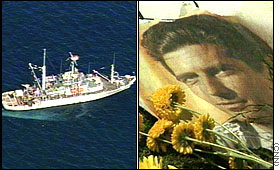Copyright (c) 2000 Eve's Magazine. All Rights Reserved.
JFK Jr. Air Crash: Pilot Commentary

To the Editor:
Bob Arnot's story [Eve's Magazine, Spring 2000] forgets to define that it is the pilot's responsibility to decide a "go-no go". JFK was not instrument rated and it was a dark night, he could have stayed in NJ for the night and still be alive. Chances of coastal fog with temp/dew point such as in the Martha's V. area are very good. I, as a CFII, would have not recommended a departure that night. AWOS and ASOS equipment is not perfect. I call my destination for a visual check of weather conditions to make sure the automated report in the system is proper for my flight and personal minima.
Lastly, the FSS WX information and other commercially available WX system's data, as it is now, is the best and most accurate and comprehensive I have seen in more than 33 years of flying. Do not confuse - JFK is dead because he used poor judgment. I am sorry to say this as I liked him - other pilots should reflect on this situation.
Rafael Sierra, CFII
Palm Springs, CA
To the Editor:
I have just read your published article: "JFK Jr Crash Investigation," by Dr. Bob Arnot. I was made aware of this article by a general posting to an internet newsgroup: EC.AVIATION.*
As a licensed Private Pilot myself I feel a strong need to comment on some of the conclusions drawn by Dr Arnot. The first being the questionable light he placed upon the FAA Flight Service Station (FSS) briefer and the validity of their data. Their training is some of the highest in the FAA system, and their equipment is an order of magnitude more modern than their Air Traffic Control (ATC) brethren. Their ability to accurately predict hazardous weather related phenomena to within fractions of an hour allow the United States ATC system to maintain the incredibly high, and ever increasing, movement of air traffic volume demanded by travelers. These FSS Weather Briefers answer the phone, and provide their briefings, with the same professionalism regardless if the caller is a 747 Captain, Dr Arnot, JFKjr, or myself. And it must be this way because each of us as pilots equally use this information to guide and augment our decisions in how to make the impending flight a safe and successful one from start to destination.
Dr Arnot makes reference to some of the weather equipment not recognizing the presence of haze, as would a human observer. This is true and a known limitation of the equipment. It is a limitation discussed in nearly every aviation publication, pre-summer FAA pilot safety seminars, and by most knowledgeable flight instructors during primary training. It is one of the many deficiencies of the automated weather reporting machines (not being able to differentiate between snow and rain is another).
But not mentioned is that with the placement of these machines all pilots have hundreds, possibly thousands, of weather reporting sites never available before. Only five years ago it was not unusual to get a weather report for the departure airport and the destination 100 miles away, and have no information from any of the airports in between. With the addition of these automated weather monitoring machines at many airports the safety of flying has increased significantly. And as with any tool the user must know its, or his own, limitations. Dr Arnot did not mention that all these human observers and machines will only describe the weather within a few miles of the "terminal" location. Larger airports create a Terminal Forecast to predict the next 24 hours of weather, which also is only valid within the limited area surrounding the terminal facility.
The only real-time source of weather observations in the air are by fellow pilots who periodically call these same FSS briefers via air-to-ground radio and provide a Pilot Report (Pirep) of the conditions. In fact each telephone conversation between pilot and FSS briefer usually ends in a request/reminder by the FSS to "radio in a Pirep" if the encountered conditions are different than forecast. I didn't note Dr Arnot making an effort to close the loop and report his observations back to those FSS briefers.
In the overall, Dr Arnot's article was entertaining and well written, but it failed to emphasize the incredible responsibility a pilot has each and every time he takes an airplane into the air. If that airplane has any passengers aboard, the soundness of his judgement combined with his training and abilities become that much more critical. Each and every pilot, Boeing 747 or Cessna Skyhawk, must confirm the airworthiness of his/her aircraft and his/her own competency to successfully complete the flight. It is well recognized by the many aviation tragedies what the results are of failing to meet those incredible responsibilities.
Sincerely,
Michael Isaksen
Long Island, NY